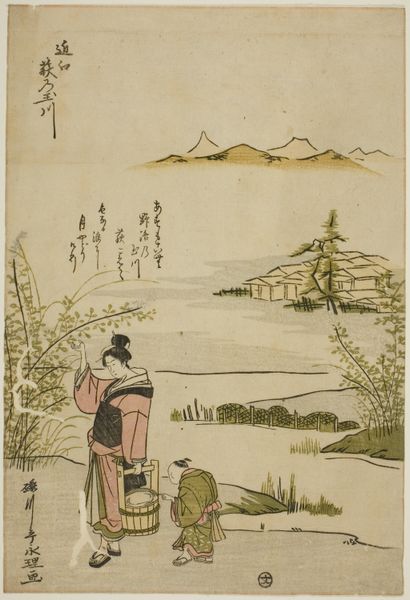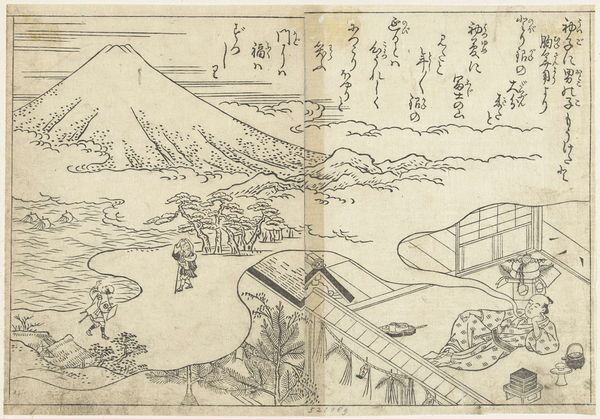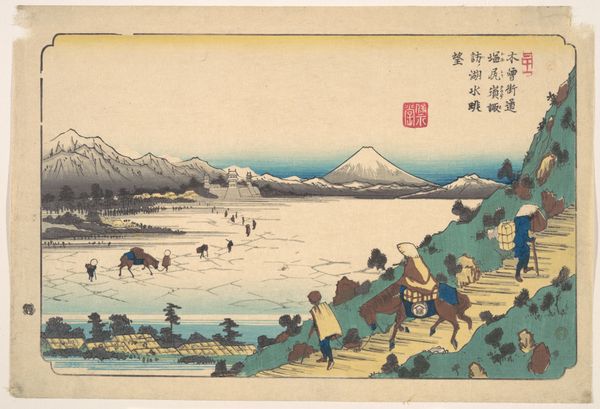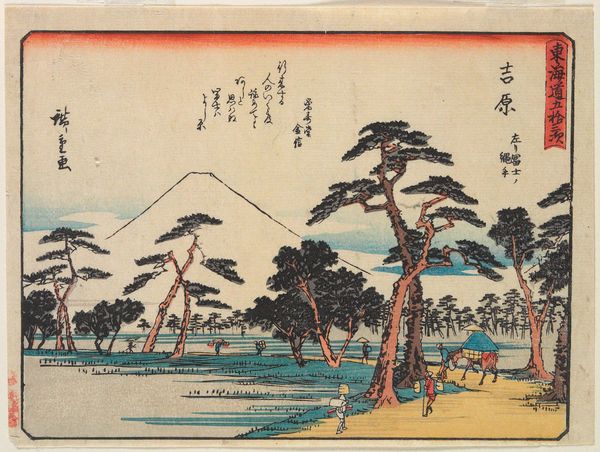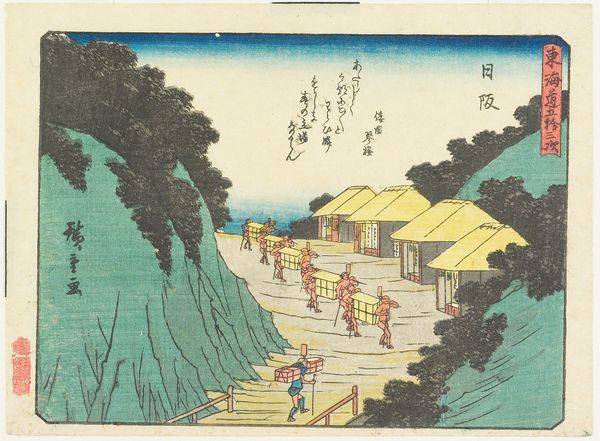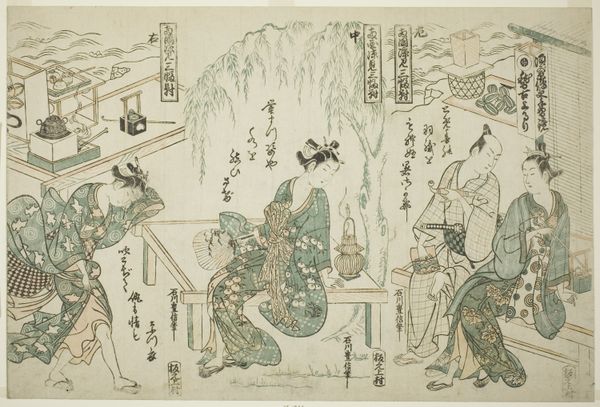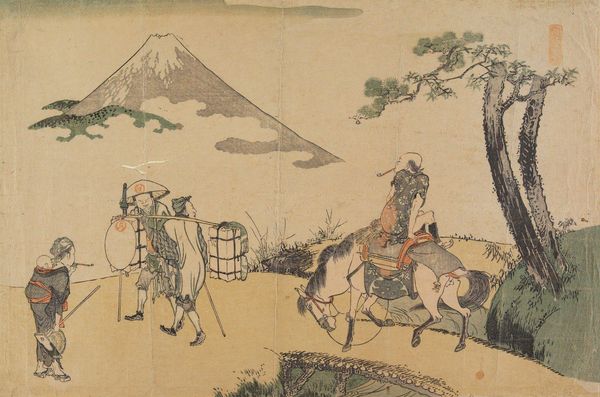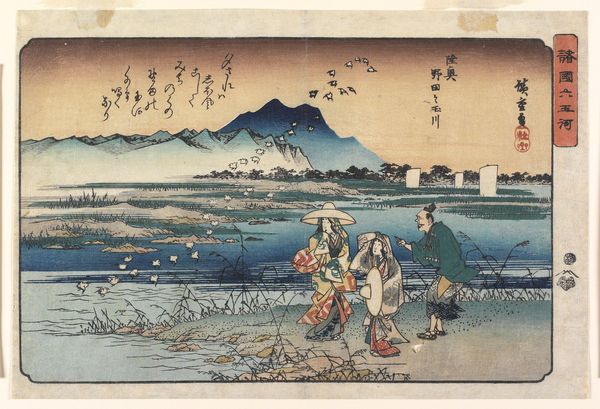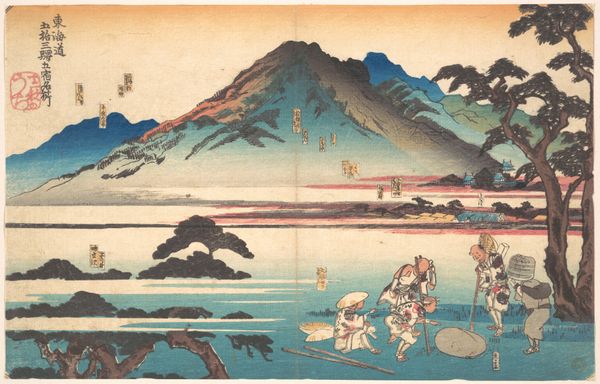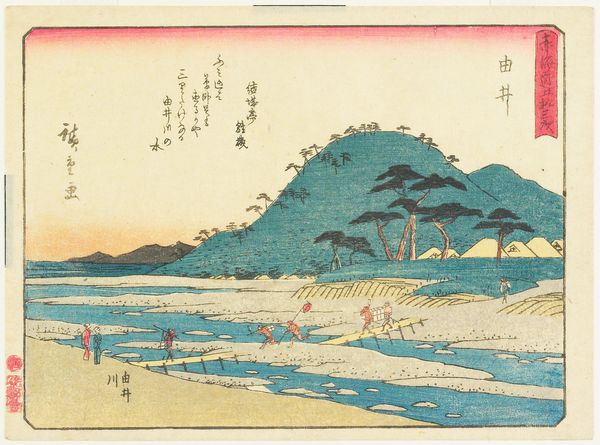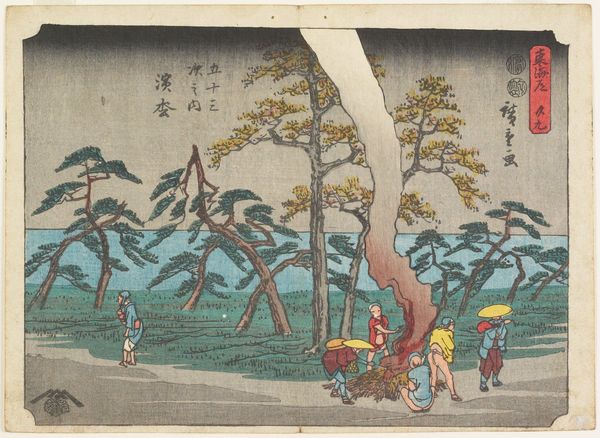
print, woodblock-print
# print
#
asian-art
#
landscape
#
ukiyo-e
#
figuration
#
woodblock-print
Dimensions: height 225 mm, width 330 mm
Copyright: Rijks Museum: Open Domain
Curator: Welcome. Here we have "Harimaze met Fuji", a woodblock print created in 1858 by Utagawa Hiroshige. It resides here with us at the Rijksmuseum. Editor: This work immediately strikes me as serene, almost dreamlike, with its soft washes of color and compartmentalized compositions. Curator: "Harimaze" translates to "assorted pictures," a format popular in ukiyo-e prints where several distinct images are combined into one sheet. Hiroshige, known for his landscape prints, employs this to showcase various scenes connected, most noticeably, by Mt. Fuji, visible in one of the four scenes shown here. Consider the material production. The print required skilled artisans for carving the woodblocks and printing, demanding a labor division representative of the era's craft production and consumer demand for prints. Editor: And consider that imposing Mount Fuji. Not just a mountain, but a symbol. It’s often associated with immortality, good fortune, and national identity. Even within the small vignette showing it, there are visual echoes and suggestions beyond the representational level. Curator: Absolutely. We also see irises in another section, cherry blossoms, which speaks volumes about the seasonal materials that comprised dye availabilities as well as what sold to audiences at various points. Editor: The image with the basket of flowers and fishing pole also creates a kind of still-life, which has meditative significance in Buddhist-inspired art practices. There's such gentle imagery to consider, yet so much weight imparted to these specific symbols that create connections between earthly practices and metaphysical insight. Curator: I would not underestimate the social role the artist plays when combining art and function here. "Harimaze" prints like this would have been relatively affordable, designed for mass consumption in the burgeoning urban centers. They brought images of famous landscapes and desirable objects into the homes of merchants and other city dwellers. Editor: It seems like a precursor to modern-day picture collages then. An attempt to distill complex feeling down into simple visual cues. This format of juxtaposed scenes works almost like memory itself – a layering of sensations and iconic significance to a cultural group that, centuries later, still imparts feelings of peace and wonder. Curator: Reflecting on it then, what fascinates me is how this print blurs the boundaries. Is it landscape? Is it genre painting? A collection of still-lifes? It speaks to a complex understanding of art that went beyond any fixed set of media to embrace materials as a carrier of value, status, and the everyday enjoyment of an increasingly commercial and cosmopolitan culture. Editor: It reminds us that, no matter how small or seemingly straightforward an image is, symbols imbue great cultural depth and carry stories that transcend the purely visible.
Comments
No comments
Be the first to comment and join the conversation on the ultimate creative platform.
